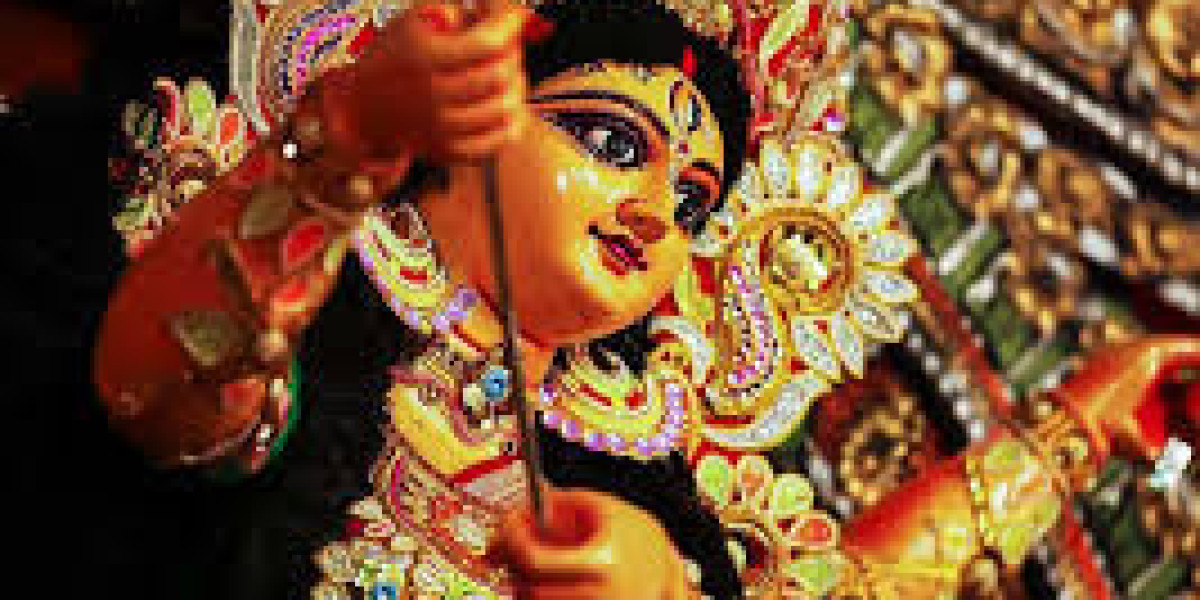Navratri, a nine-day festival dedicated to the worship of the Hindu goddess Durga, is celebrated with great devotion and joy across India and beyond. It marks the victory of good over evil and the worship of divine feminine power. Each of the nine days is devoted to different manifestations of Goddess Durga, known as Navadurga, and includes a series of rituals that require specific puja items or 'Samagri.' Understanding the right Navratri Puja Samagri is crucial for devotees to perform rituals properly and invoke blessings. This guide provides a detailed overview of all the essential items needed for Navratri Puja.
1. The Importance of Navratri Puja Samagri
The essence of Navratri lies in its elaborate pujas and rituals, which are performed to honor the goddess and seek her blessings. Each item in the Puja Samagri carries a symbolic meaning and plays an integral role in the worship process. Proper preparation and the use of the right ingredients help ensure that the rituals are conducted according to tradition, creating an environment of positivity, spirituality, and devotion.
2. List of Essential Navratri Puja Samagri
Here is a detailed list of the primary items required for Navratri Puja:
a. Kalash (Sacred Pot)
The Kalash is a vital part of Navratri Puja and symbolizes prosperity and the divine presence. It is usually filled with water, mango leaves, and a coconut placed on top. A red or yellow cloth is tied around the neck of the Kalash, and it is positioned on a bed of rice or grains.
Items Needed:
- A metal or clay pot (preferably copper or brass)
- Clean water
- Mango leaves
- Raw coconut
- Red or yellow cloth
- Rice grains
b. Durga Idol or Picture
The central focus of the Navratri Puja is the idol or image of Goddess Durga. It is adorned with clothes, jewelry, flowers, and garlands. If a physical idol is not available, a framed image of the goddess can also be used.
Items Needed:
- Idol or framed picture of Goddess Durga
- Red or saffron cloth for draping
- Jewelry and garlands for decoration
c. Navratri Thali (Worship Plate)
The puja thali is an essential part of the Navratri Samagri. It is use to hold various items required during the worship, such as incense sticks, a diya (lamp), kumkum, and flowers. Devotees arrange these items on the thali and use them during the ritual to offer their prayers.
Items Needed:
- A metal thali (preferably brass or silver)
- Kumkum (vermilion)
- Sandalwood paste
- Rice grains (Akshat)
- Incense sticks
- Camphor
- Diya (oil lamp) with ghee or oil
- Fresh flowers
d. Fruits and Sweets (Naivedya)
Offering fruits and sweets, known as 'Naivedya,' is an important part of Navratri Puja. It is a gesture of expressing gratitude and devotion to the goddess. Some common sweets include ladoos, barfis, and kheer, while seasonal fruits are used for the offering.
Items Needed:
- Fresh seasonal fruits (bananas, apples, pomegranates, etc.)
- Sweets (ladoo, barfi, or homemade prasad)
- A clean plate for offering
e. Haldi (Turmeric) and Kumkum (Vermilion)
Haldi and kumkum are essential elements in Hindu rituals. They symbolize purity and prosperity. During Navratri, haldi and kumkum are applie to the goddess's idol and are also given to women who participate in the puja.
Items Needed:
- A small bowl of turmeric powder
- A small bowl of kumkum
f. Panchamrit (Sacred Mixture)
Panchamrit is a sacre mixture made from milk, honey, ghee, curd, and sugar. It is use to bathe the idol or image of the goddess as a part of the worship ritual. After the puja, Panchamrit is distribute among the devotees as prasad.
Items Needed:
- Milk
- Honey
- Ghee (clarified butter)
- Curd (yogurt)
- Sugar
g. Holy Water (Ganga Jal)
Ganga Jal (water from the River Ganges) is consider extremely sacre and is use to purify the puja space and the items use in the ritual. If Ganga Jal is not available, clean water mixed with a few tulsi (basil) leaves can be use.
Items Needed:
- Ganga Jal or purified water
- Tulsi leaves (optional)
h. Flowers and Garlands
Fresh flowers, especially marigolds and roses, are offer to the goddess as a symbol of devotion and purity. Garlands are use to adorn the idol or picture of the goddess during the puja.
Items Needed:
- Fresh flowers (roses, marigolds, jasmine, etc.)
- Flower garlands
i. Betel Leaves and Betel Nuts (Paan and Supari)
Betel leaves and betel nuts are considere auspicious and are commonly use in Hindu rituals. During Navratri, they are offere to the goddess as a part of the puja offerings.
Items Needed:
- Fresh betel leaves
- Betel nuts (Supari)
j. Coconut
Coconut is a symbol of prosperity and is offere to the goddess during the puja. It is usually place on the Kalash and later offered to the goddess along with fruits and sweets.
Items Needed:
- One whole coconut
3. Setting Up the Navratri Puja Altar
Once you have gathered all the puja samagri, it’s time to set up the puja altar. Choose a clean and auspicious place in your home for the puja. Spread a clean, preferably red or yellow, cloth on a raised platform and place the idol or picture of Goddess Durga on it. Arrange the Kalash filled with water in front of the goddess and place the rest of the items, such as the puja thali, fruits, sweets, and flowers, on the altar.
4. Performing the Navratri Puja
The Navratri Puja typically begins with the invocation of Lord Ganesha, seeking his blessings to remove obstacles. Following this, the Kalash is worshippe, symbolizing the presence of the goddess. Then, the idol or picture of Goddess Durga is bathe with Panchamrit, dressed, and adorned with flowers, jewelry, and garlands. Devotees offer the various samagri items, chant mantras, and recite prayers dedicated to Goddess Durga. Lighting the diya and incense sticks signifies the illumination of knowledge and devotion. The puja concludes with the distribution of Naivedya and prasad to the devotees.
5. Conclusion
Navratri Puja is an act of reverence and devotion, requiring various samagri items to honor the goddess properly. Each item in the Navratri Puja Samagri has a symbolic significance and plays a unique role in invoking the goddess’s blessings. Preparing and arranging these items with devotion and care is consider a part of the worship itself, enhancing the spiritual experience of the festival.
By following this complete guide to Navratri Puja Samagri, you can ensure that your puja rituals are performe with the right intentions and according to traditional practices, bringing positivity, prosperity, and divine grace into your home during the auspicious festival of Navratri.








